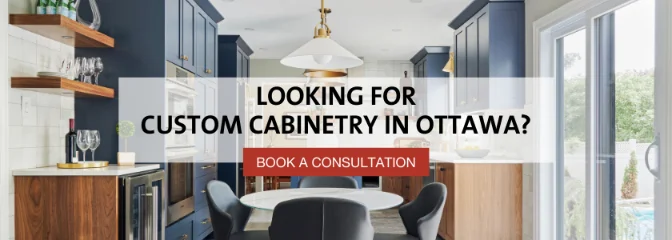10/07/2023 • Blog, Design Tips, Custom Cabinets
What are Adjustable Cabinet Legs?
Estimated Read Time: 5 Minutes
When it comes to your kitchen, having perfectly level kitchen cabinets is vital to a successful design.
Although most homeowners aren’t focused on those details, out-of-level cabinetry can lead to other issues like your countertops not properly fitting, or even cracking and ruining your stone surfaced down the road.
One method of ensuring kitchen cabinets fit seamlessly into your home is by using adjustable leveller legs.
At Deslaurier, we have over 40 years of experience manufacturing custom cabinets in Ottawa and Renfrew, Ontario. In that time we’ve completed thousands of kitchen projects, whether they’re new builds or decades-old renovations.
We know how important perfectly level kitchen cabinets can be.
In this article, we will explore adjustable cabinet legs, how they differ from integrated cabinet toe-kick, and what benefits they bring to kitchen cabinet installation.
Let’s get started!
| Table of Contents |
Adjustable Cabinet Legs
Adjustable cabinet legs, also referred to as leveller legs, are additional supports added to the base of cabinets to raise them off the floor.
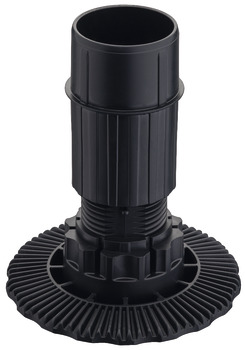
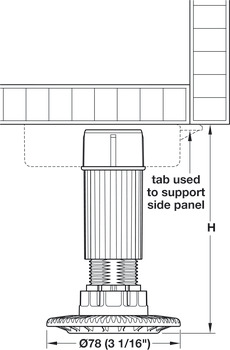
A mounting base plate is applied to the bottom of the cabinet box and the adjustable legs are attached afterwards.
Hence their name, leveller legs can be raised or lowered with minimal effort to ensure cabinets are properly level with the floor. These adjustable leveller legs incorporate a threaded mechanism that automatically secures as you raise or lower the height.
At Deslaurier, we use award-winning German-engineered, heavy-duty leveller legs that are sturdy, stable, and have a large variability in height that can be utilized from 50mm to 220mm.
Integrated Toe-Kick
An integrated toe-kick is a recessed space at the bottom front of a cabinet.
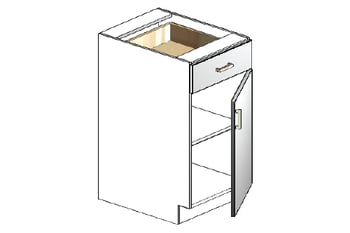
Integrated toe-kick replaces the need for separate legs and is fully built-in to the cabinet box. Thus, the cabinet itself rests directly on the floor.
Importance of Levelling Cabinets
When it comes to renovations – and even many new builds as well – you’ll find that floors and walls are rarely perfectly level. An older home can be as much as an inch or two out of level from one end of a kitchen wall to the other.
Ensuring the cabinetry is level and there are no visible gaps on the floor is often one of the primary challenges during cabinet installation.
For cabinets with integrated toe-kicks, installers will prop thin pieces of wood called shims underneath or behind the cabinet.
Shims are used in an attempt to level the cabinet with the floor, but they can result in unwanted, visible large gaps. Any visible gap will need to be covered with a panel over top of it or use additional trim mouldings to hide it.
Leveller legs, on the other hand, eliminate those potential gaps.
This is because they allow installers to level the cabinets properly to the specific floor. If the floor from one end of a cabinet is out of level, all it takes is a quick adjustment of the leveller legs to even things out.
A long run of base cabinets on an uneven floor could require plenty of shims. Adjustable legs save a lot of time and effort when dealing with a long run of cabinets.
Cabinet Toe-Kick
Probably wondering how leveller legs can be covered with a finished cabinet toe-kick. Aside from a bathroom vanity or two, most homeowners do not want their kitchen cabinets to have adjustable legs on display.
With leveller legs, there’s no integrated piece of material to nail the toe-kick to, just legs. Instead, they use clips.
Two different types of clips are commonly used to attach toe-kick to the cabinet legs.
The first type, as shown in the picture below, directly attaches to the leg of the cabinet. By utilizing this method, the toe-kick can easily snap into place on the clip.
This option offers simplicity and convenience, making it a popular choice for cabinets with leveller legs. Deslaurier's leveller leg cabinets, for example, make use of this straightforward attachment method.
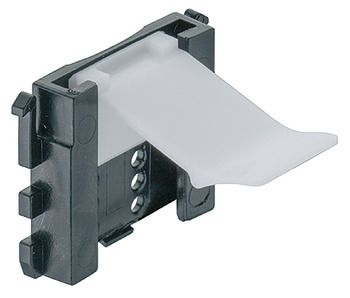
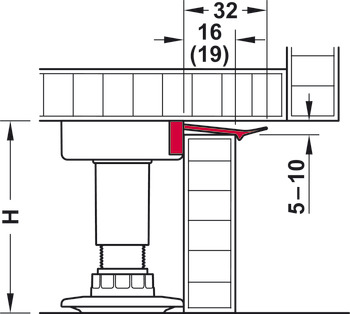
The second method is a clip that is screwed to the toe-kick itself and attaches around the cabinet leg.
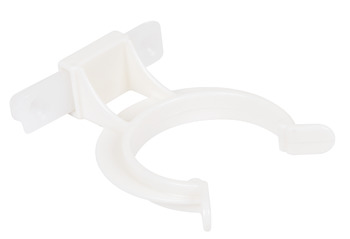
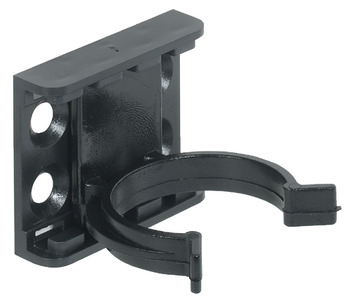
Accessibility
A benefit of leveller legs is the entirety of the cabinet is raised off the ground.
This provides accessible space so other trades can run mechanical or electrical wiring underneath the cabinetry.
It essentially creates a built-in access panel that allows, for example, electrical wiring to run underneath a row of cabinetry without the need for drilling holes in the bottom or side of the cabinets.
This easy access is extremely beneficial during the kitchen installation process or for any access you may need in a finished kitchen.
Adjusting the Rear Cabinet Legs
If you’ve ever tried to reach for something underneath a cabinet, you know how deep and bulky those cabinet boxes can be to deal with.
Which begs the question, how do you level the rear cabinet legs?
Manufacturers make a specific tool for that! The adjustment tool makes it easy to reach and adjust the rear cabinet legs.
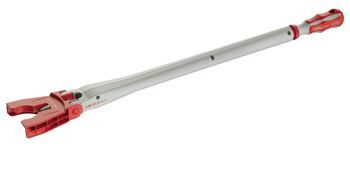
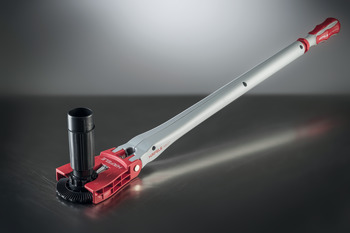
This especially comes in handy for deeper corner cabinets. The adjustment tool makes the process much easier and is simple enough for any homeowner to use.
Benefits with Water Damage
Leveller legs have an added benefit of something most homeowners don’t consider until it’s too late: water damage.
Water damage can and does happen in a kitchen. It’s an unfortunate reality of home ownership. Whether it’s caused by plumbing lines, overflowing sinks, clogged drains, or appliance leaks.
The legs raise the cabinet box high enough to avoid it (unless there are substantial amounts of water in which you have larger issues on your hands). This allows you to replace only the toe-kick and not have to worry about the actual cabinet itself being damaged.
Conversely, water damage on a cabinet with an integrated toe-kick is a different story. This would result in the actual cabinet box being damaged and needing to be fully replaced.
Design Challenges
With leveller legs, there is potential for some design challenges, specifically for furniture toe-kick.
Furniture toe-kick is different from standard cabinet toe-kick in that it comes flush to the front of the cabinet, in line with the doors.
Since the leveller legs are affixed several inches behind the front of the cabinet, this requires an additional material build-up for the toe-kick to be installed onto.
It’s by no means a major issue but is still worth noting if you’re considering furniture toe-kick to accompany your kitchen cabinets.
Design with Deslaurier Custom Cabinets
If you’re in the market for custom cabinets and kitchen design, Deslaurier Custom Cabinets has everything you need!
With over 40 years of experience in our name, we provide our clients with a fully customized design process with our talented team of designers.
Book a consultation today with a Deslaurier design expert at our Ottawa Showroom or schedule a virtual meeting!
Live outside the area? Find a Dealer to connect with near you! Interested in becoming an authorized Deslaurier dealer? Visit our Become a Dealer page to learn more!



